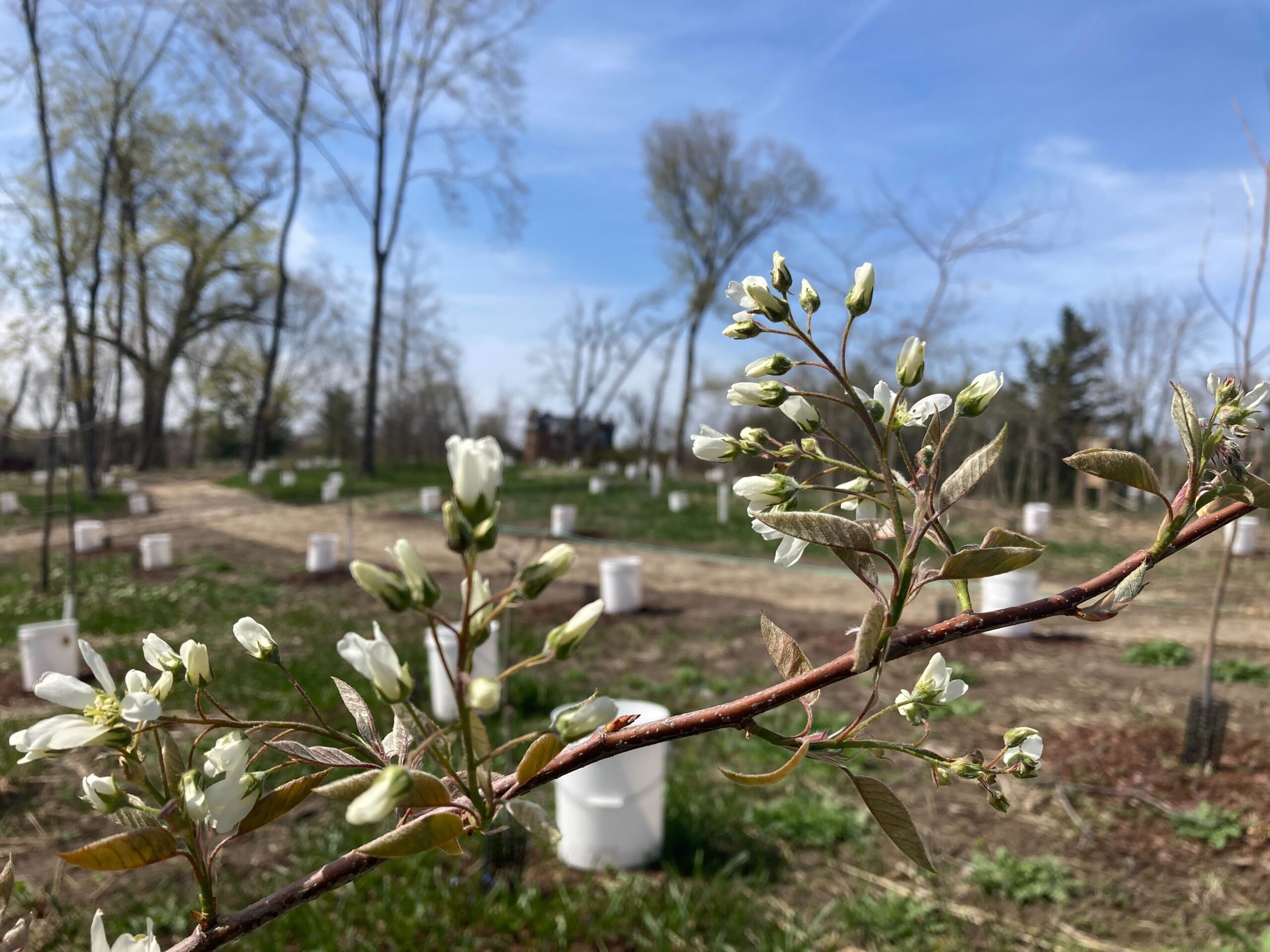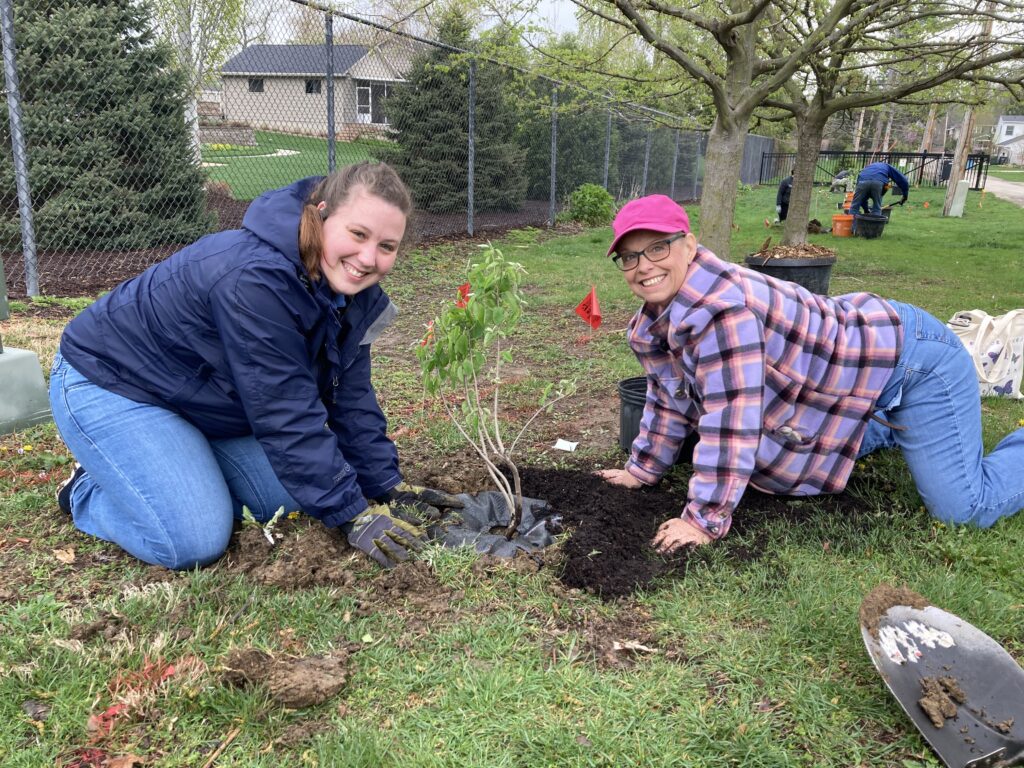
A Brighter Future
A 2020 windstorm earned the distinction of being the most expensive thunderstorm in United States history. Despite the impact on the landscape, Brucemore has shown resilience as it rebuilds for the future and seizes the opportunity to replenish the natural features and leave them stronger and more beautiful than ever before. With your help, we can:
- Create new experiences for visitors to enjoy across the 26-acre landscape.
- Embrace environmental sustainability by using native species and storm-resilient planting techniques.
- Enhance the history of the site by restoring original 1920s landscape features.
A Community of Support
Donations big and small have made the progress towards revitalizing the landscape possible. A special thank you to these companies and organizations for their support!
- Alliant Energy
- Cedar Rapids Garden Club
- City of Cedar Rapids Hotel-Motel Tax Fund
- Collins Aerospace Charitable Giving
- Emergency Grant Fund and the Nonprofit Recovery Fund of the Greater Cedar Rapids Community Foundation
- Historic Sites Fund of the National Trust for Historic Preservation
- International Paper Foundation-Cedar River Mill
- Iowa Department of Cultural Affairs-Derecho Recovery Emergency Relief Grant
- Linn County Historic Preservation Grant Fund
- Marge and Joe Grills Fund for Historic Gardens and Landscapes of the National Trust for Historic Preservation
- McIntyre Foundation
- Monarch Research Project “Planting Forward”
- New Leader Manufacturing – Spreading Good 380
- Trees Forever
Help Brucemore re-establish the flowers, shrubs, bushes, and trees by donating to the garden and landscape restoration. Donate today.
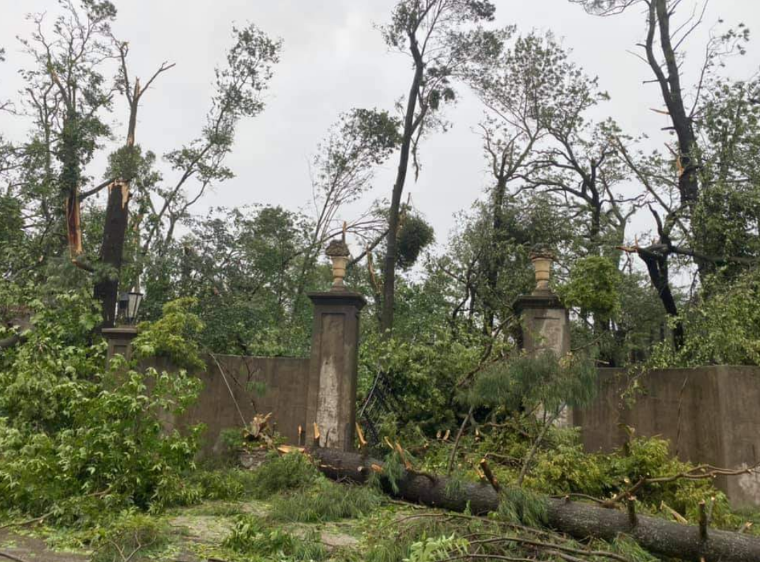
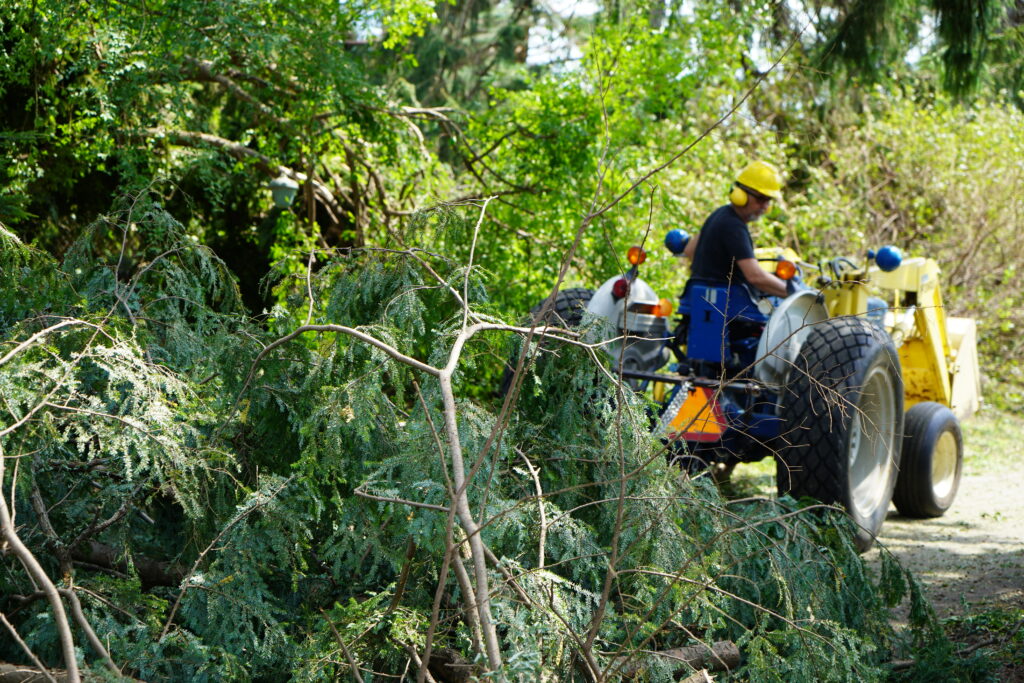
An Inland Hurricane
On August 10, 2020, a powerful windstorm known as a derecho swept across the Midwest. The derecho reached hurricane-like windspeeds of up to 140 miles per hour and earned the distinction of being the most expensive thunderstorm in United States history.
The Brucemore estate suffered over $3 million damage to all seven historic buildings, two operational buildings, hundreds of yards of fencing, multiple gates, several historic features, and the landscape. The violent, sustained force of the straight-line winds destroyed more than 70% of the estate’s tree canopy. Experts believe the devastation was among the worst suffered by a cultural landscape in the last century.
Staff spent the first year following the storm assessing previous landscape plans, conducting original archival research, and working with expert assistance to develop a Historic Landscape Master Plan to inform future replanting efforts with the national significance of the landscape in mind.
Learn more about the history of the landscape over time.
Image Gallery

2160 Linden Drive SE has been the entrance to the property since the mid-20th century. The large trees that lined the drive were felled by the straight-line winds, blocking the entrance.
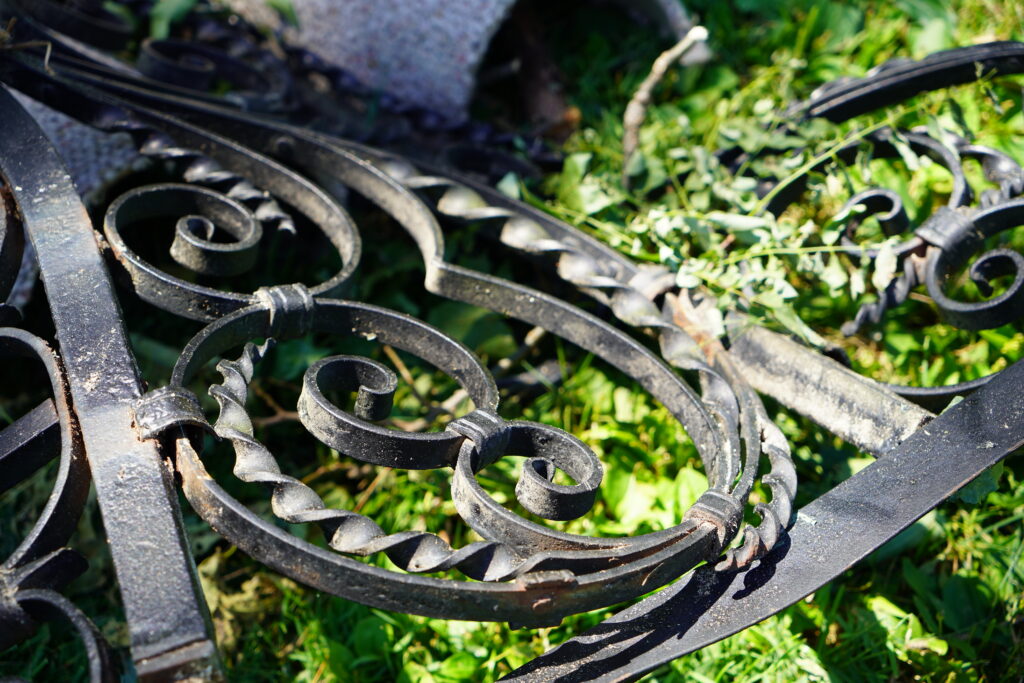
The historic wrought-iron gates at Linden Drive were crushed, bent, and mangled by the tree debris. Conservation requires special expertise in metal working to restore their shape and functionality.
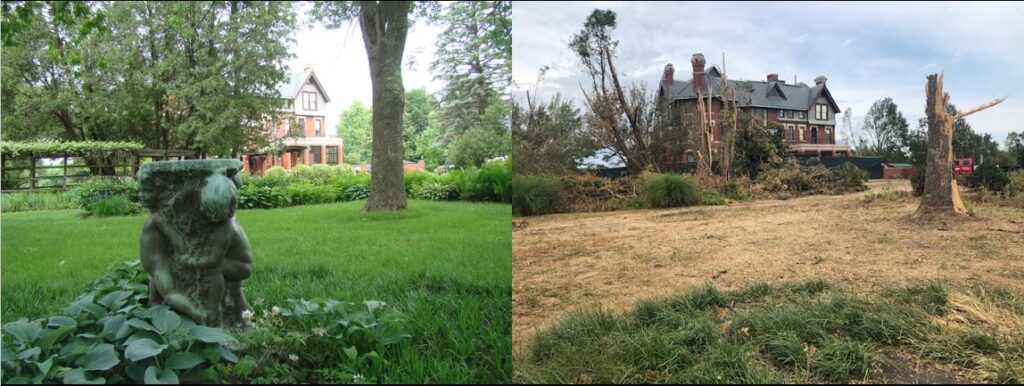
Irene Douglas, the second matriarch of the estate, helped to design the Formal Garden south of the mansion. The majestic tree canopy was decimated, and the copper statue called Dancing Children was hit by a falling tree and will require conservation.
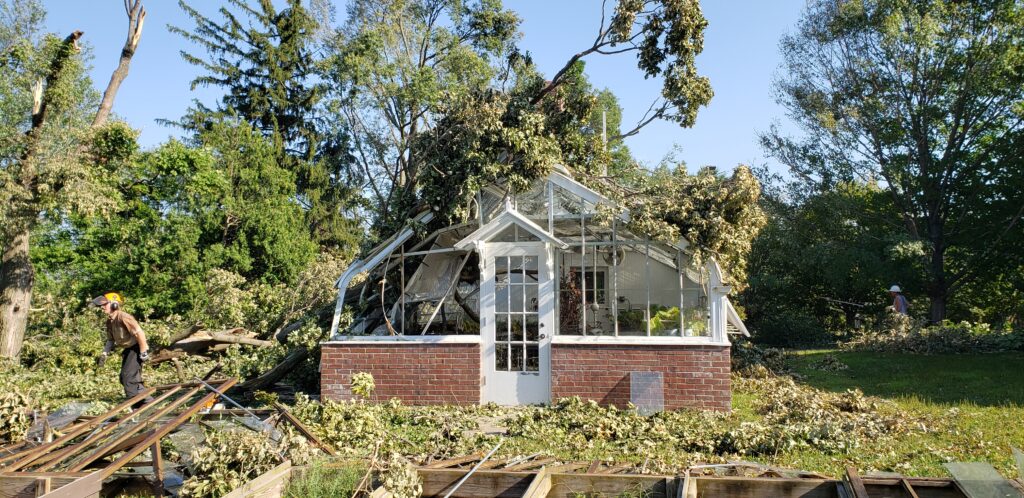
The 1912 Lord & Burnham Greenhouse was hit by a falling tree which crushed the recently restored glass enclosure. In the weeks after the storm, staff carefully removed the tree so the full extent of damage could be inventoried.
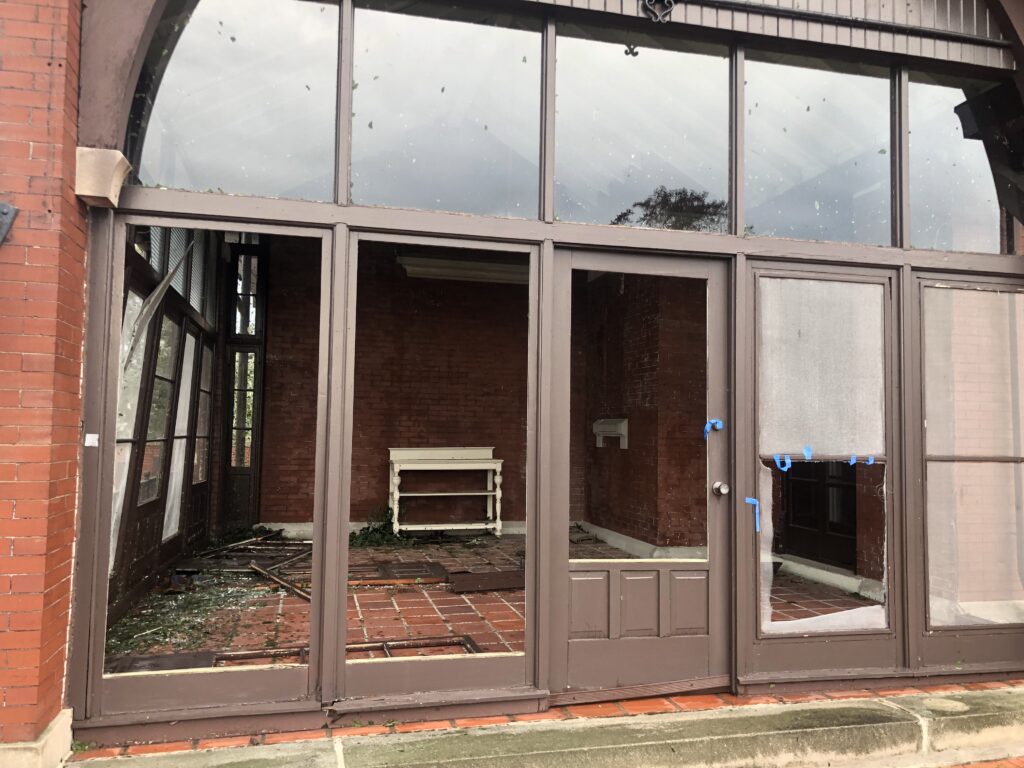
The Breakfast Porch on the east side of the mansion imploded during the storm. The porch will be fully restored.
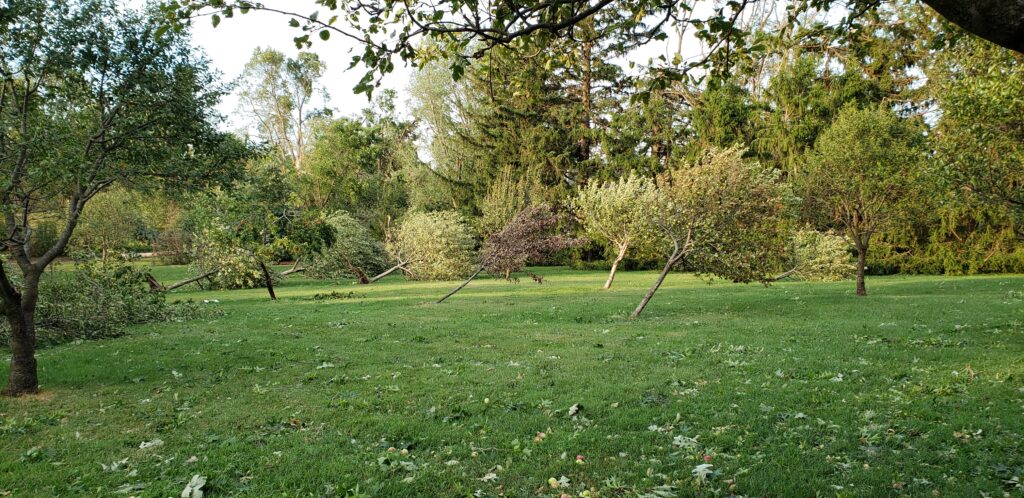
The orchard to the east of the mansion was in the direct path of the wind, causing many of the fruit trees to bend or topple. A partnership with Feed Iowa First led to new fruit tree plantings in the spring of 2021, which will provide future benefit to the community.
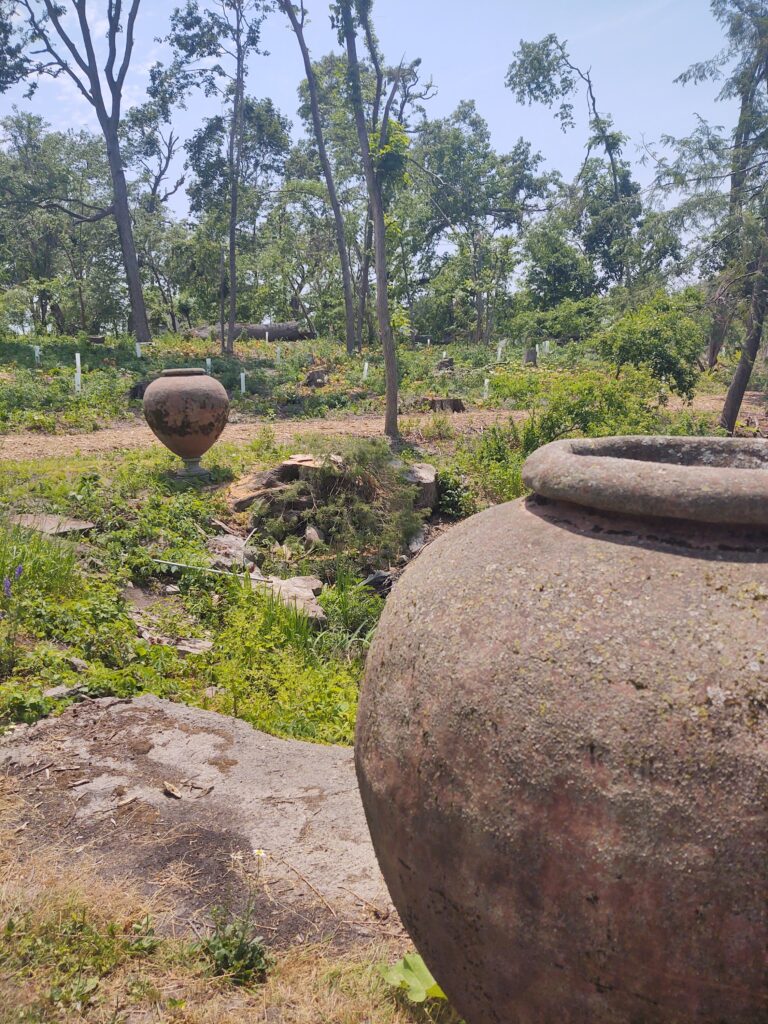
Landscape recovery is expected to be a multi-year effort led by a Historic Landscape Restoration Plan currently in development. Visitors can expect to see many new plantings, like these in the woodland, in the years to come.
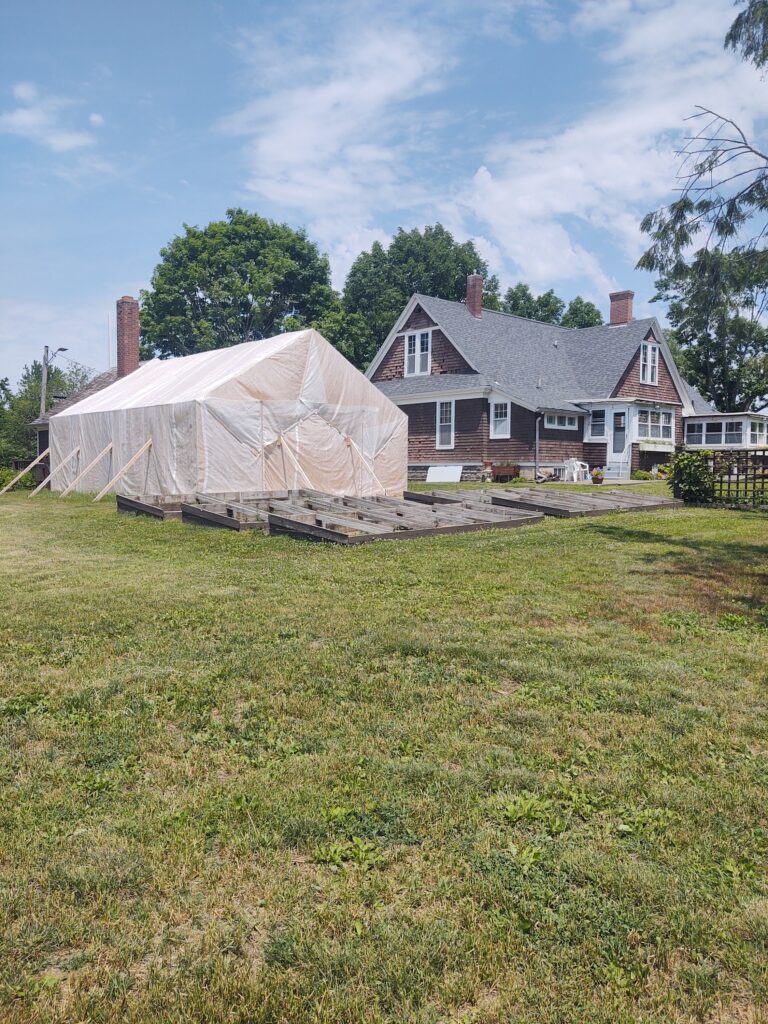
A temporary covering was created surrounding the Lord & Burnham Greenhouse to protect the structure during the winter months. Full restoration of the glass enclosure is anticipated by end of calendar year 2021.
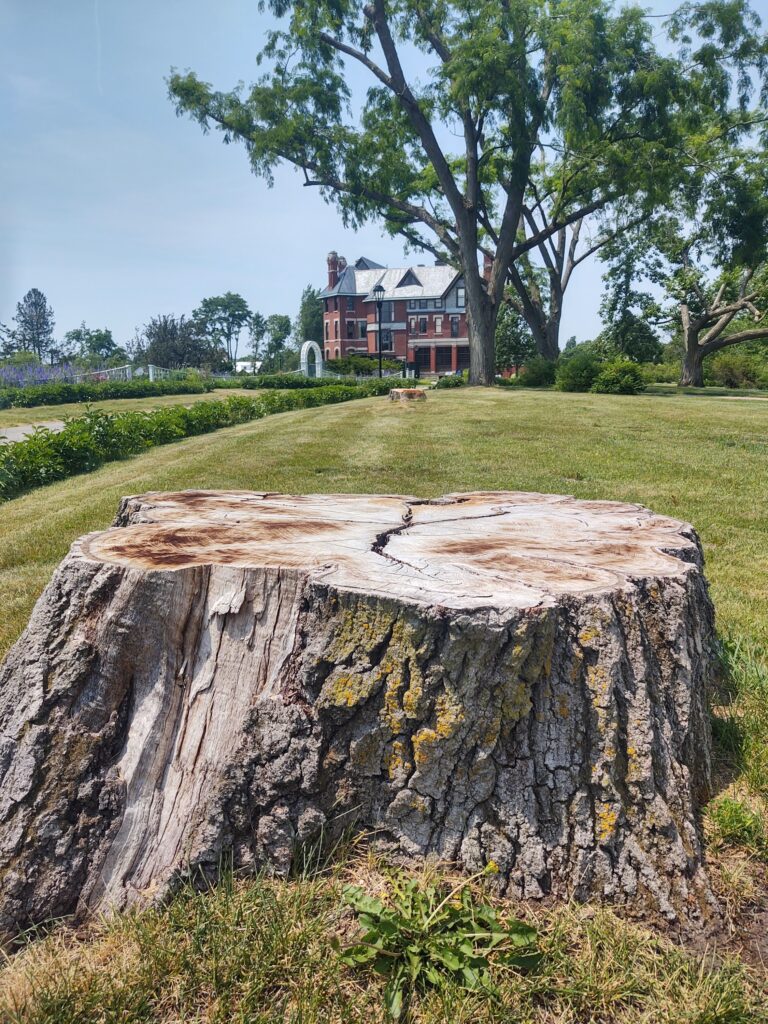
This oak tree was over 100 years old. The organization plans to retain this stump in memory of the majestic tree and as a reminder that although the storm decimated the estate, recovery is possible.
